Several trends in institutional and government funding are emerging that can have significant impacts on nonprofits – if they are prepared to take advantage of them.
There are several emerging trends around institutional donors and government funding that can have a significant impact on nonprofit organizations — if they are prepared to take advantage of these less restrictive resources. With large amounts of money becoming available, wise CEOs will be working with fundraisers, consultants, accountants, and even lobbyists to get their piece of the 2021 funding pie.
Here are six growing trends and some ideas on how organizations can find success by strategically acting on them.
TREND 1
FOUNDATION GIVING INCREASED AT A RECORD PACE
KEY TO SUCCESS With emphasis on localized, real-time giving on the rise, organizations should get to know their community foundations. They provide visibility amongst their fundholders and oversee the distribution of resources for many individuals and institutional donors. Nonprofits should view all of their foundation funders as partners rather than gatekeepers. Funders truly want nonprofit organizations to be successful and will often help coach organizations through the process of securing funding if appropriate. If they are not the appropriate source of funding, they may help organizations find the right source.
Virginia G. Piper Charitable Trust echoes this philosophy. “The Trust wants to work alongside the nonprofit community as a partner in learning, adapting, and finding solutions,” says Mary Jane Rynd, Piper Trust president and CEO. “It’s also critical that philanthropies collaborate and coordinate grant support, nurture relationships, and explore new alliances that will help build lasting community resilience,” says Rynd.
“If there’s one thing the pandemic taught us, it’s that collaboration is key,” says Carla Vargas Jasa, Valley of the Sun United Way president and CEO. Whether addressing the inequities within our communities or meeting the needs of the underserved, “we can make a more significant difference in our communities by working together. It can be done and we’re looking forward to being part of this change in how funders collaborate more deliberately, just as funders ask of nonprofits.”
TREND 2
DECREASE IN CORPORATE GIVING
KEY TO SUCCESS While corporate philanthropy declined in 2020, there is a shift to more ambitious social responsibility agendas by many corporations. This may give nonprofit organizations additional opportunities for sponsorships, cause-related marketing, in-kind donations, and employee giving.
TREND 3
A BOUNTY OF GOVERNMENT FUNDING AVAILABLE AS A RESULT OF COVID
KEY TO SUCCESS The government is infusing billions of federal grant monies into states, and nonprofit agencies that move quickly to access and optimize this revenue source will benefit. While there is still uncertainty around the process of applying for and securing many of these grants, the money is being distributed, so it is important for nonprofits to assertively pursue these opportunities as soon as possible. Kim Joyce, founder at Kim Joyce & Associates suggests using these resources to help organizations prepare and stay up to date:
- Summary of the American Rescue Plan Act of 2021 – Independent Sector
- Blogs such as eCivis
- Grant management training and resources, such as MyFedTrainer.com, The Grant Professional Association (GPA) and National Grants Management Association (NGMA)
- Online subscription-based products for grant research such as Foundation Directory Online, Instrumentl, GrantStation, and other local databases, as well as Grants.gov
TREND 4
SHIFT TOWARD WHOLE AGENCY
KEY TO SUCCESS Funding is shifting more toward nonprofits as whole entities rather than focusing on specific programs, which may open additional opportunities for organizations. The best way to take advantage of this trend is to be proactive, advises Joyce. “Talk to funders early on. Don’t wait to communicate. Funders that are a good fit for your organization will coach you through the process to help make you more successful in acquiring those funds, and perhaps even additional funds you may not have asked for.”
Vargas Jasa emphasizes VSUW’s focus on community engagement and alignment to develop the organization’s new 5-year impact goals, as a part of its recently launched MC2026 plan. “We’re looking at how VSUW can partner with organizations that align with our goals and collaborate with them to build or enhance a collective impact model to drive needed change.”
TREND 5
MORE FOCUS ON SOCIAL JUSTICE INITIATIVES AND DIVERSITY
KEY TO SUCCESS Funders are putting organizations under increased scrutiny about social and racial justice and diversity, equity, access, and inclusion. If you say you have a DEAI agenda, it needs to be infused throughout the organization, and nonprofits must be prepared to answer detailed culture and outcomesbased questions from funders. “Nonprofits that are not collecting information regarding the diversity of board members, inclusivity of programs and staff, and demographics and income levels of those they serve, need to start,” says Joyce.
Taking the DEAI focus to heart, VSUW is looking at its internal structure and practices to ensure they align with the expectations of the organizations it funds. “Rather than just expecting change from those we fund, we are taking a close look at ourselves first, including our board structure and how we show up in the community in terms of diversity, equity, access, and inclusion,” says VSUW’s Vargas Jasa.
TREND 6
FOUNDATIONS PLEDGING TO INCREASE COMMUNITY0CENTRIC DONATIONS WITH FEWER RESTRICTIONS
KEY TO SUCCESS Many foundations have adopted policies to provide more unrestricted grant dollars to nonprofits, allowing them greater flexibility to use funding where it is needed most. To take advantage of this trend, don’t pigeonhole your organization into one funding category or limit your options to sources that seemingly only support specific categories like education, arts and culture, or healthcare. Your organization is likely more diverse and complex and falls into multiple funding categories, so reach out to sources outside obvious categories as this community-centric focus increases.
Piper Trust participated in the Council on Foundations global pledge to increase unrestricted funding and reduce reporting burdens for nonprofit partners. “We had to respond differently during the past very atypical year – it was critical that the Trust provide unrestricted grants giving grantees flexibility and discretion to use the funds how they saw best to meet their missions,” says Rynd.
Community engagement is a priority for VSUW, according to Vargas Jasa. “Through grassroots efforts and built-in feedback loops, we are continually asking the community and those working at the front lines, ‘what can United Way do for the community?’ And that sometimes means being more flexible in how we support those organizations that may not have previously met our stringent requirements.”
Opportunities Define 2021 Giving In the wake of a challenging year, nonprofits that stay agile, informed, and close to their funding sources look to benefit in 2021 and beyond. New partnering and funding opportunities are aplenty for those nonprofits, foundations, and government entities whose missions and goals align.
Richard Tollefson is founder and president at The Phoenix Philanthropy Group, an Arizona-based international consulting firm serving nonprofit organizations as well as institutional and individual philanthropists. He can be reached at 602-578-0778 or tollefson@phoenixphilanthropy.com.
